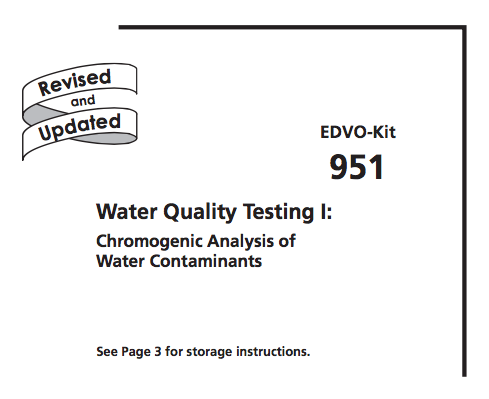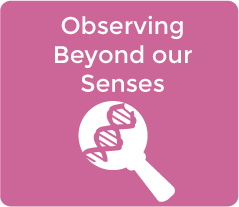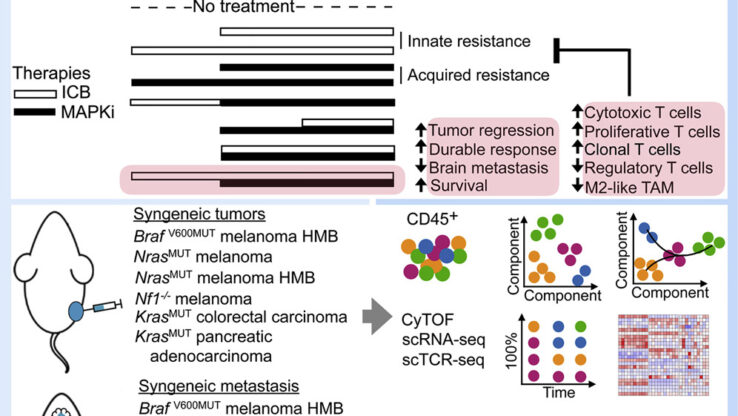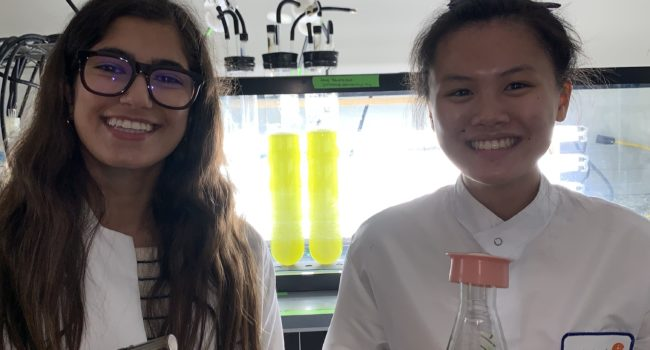Water Quality Testing I (Edvotek)
 see.isbscience.org/curriculum/community-contributed/water-quality-testing-i-edvotek/
see.isbscience.org/curriculum/community-contributed/water-quality-testing-i-edvotek/
Download PDF: Cholera water lab951
Buy Kit: http://www.edvotek.com/951
The objective of this experiment is to use chromogenic reagents to test simulations of water samples contaminated with known bacteria. As an extension, students will apply this test as a field activity to screen local bodies of water for the presence of coliform bacteria.
EXPERIMENT OVERVIEW
Coliform bacteria can be identified using a simple chromogenic (color-changing) assay. The assay takes advantage of specific substrates that are converted to colors (visible or fluorescent) by enzymes that are specific to coliform bacteria. As the concentration of coliform bacteria in the sample increases, the intensity of the color change also increases, making this assay a way to estimate the amount of total coliform bacteria in water.
A nutrient broth is added to the water sample to promote the growth of coliform bacte- ria. This broth also contains a detergent to inhibit the growth of non-coliform microbes (in particular, gram-positive bacteria), and two special indicator molecules. One molecule identifies the presence of total coliform bacteria, whereas the other molecule specifically identifies E.coli.
As the coliform bacteria grow and divide, they release specific enzymes into the nutri- ent medium. The first enzyme is present in all coliform bacteria (including E.coli). When present in the media, the enzyme cleaves the first indicator molecule, changing the color of the growth media from light yellow to bright blue-green.
An E.coli-specific enzyme cleaves the second indicator molecule, producing a molecule with bright blue fluorescence when illuminated with long-wave UV light (i.e. a black light). To further confirm the presence of E.coli, the Indole test is performed. In the pres- ence of E.coli, the addition of the Indole reagent will produce a distinctive red ring will form on top of the growth media.
IMPORTANT
Be sure to READ and UNDERSTAND the instructions completely BEFORE starting the ex- periment. If you are unsure of something, ASK YOUR INSTRUCTOR!
-
When working in this lab, it is important to avoid infecting yourself or others. Avoid all direct contact with microorganisms.
Wear lab coats, gloves and goggles.
-
Exercise extreme caution when working with equipment that is used in conjunction with the heating and/or melting of reagents.
-
DO NOT MOUTH PIPET REAGENTS - USE PIPET PUMPS.
-
While wearing gloves, clean your work area with antibacterial agents (examples
include dilute bleach solution or isopropyl alcohol) provided by your instructor.
-
Always wash hands thoroughly with soap and water after handling reagents or bio- logical materials in the laboratory.






